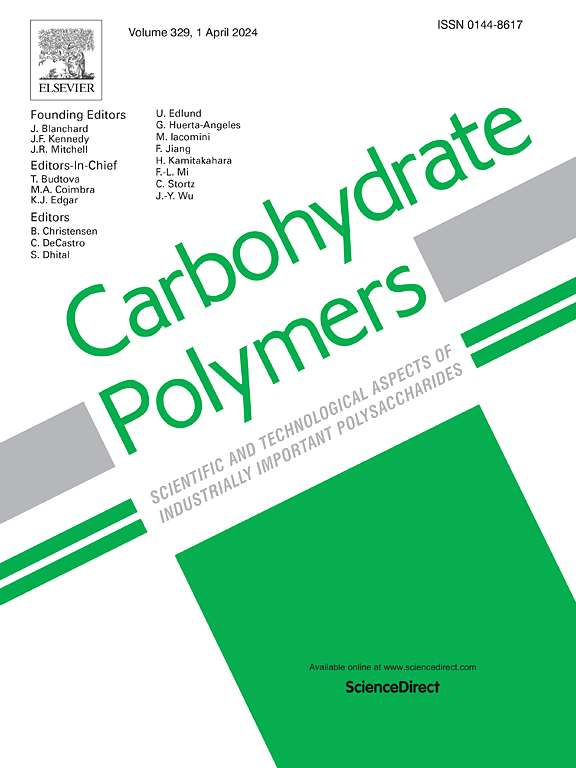Eco-friendly polylactic acid/modified thermoplastic starch films enhanced with clove essential oil and cochineal for dual-functional active and intelligent food packaging
IF 10.7
1区 化学
Q1 CHEMISTRY, APPLIED
引用次数: 0
Abstract
This study introduces a novel, industrially viable, eco-friendly packaging film based on polylactic acid (PLA) and thermoplastic starch (TPS), incorporated with cochineal dye and clove essential oil (CEO), to simultaneously monitor spoilage and preserve high-protein foods, such as shrimp. Citric acid-modified TPS showed significant improvements in particle dispersion, interphase adhesion, and size reduction when blended with PLA. Incorporating 20 % modified TPS into PLA significantly enhanced ammonia sensitivity, achieving faster and more uniform color changes, while improving tensile strength by 32.6 % to 28.48 ± 1.25 MPa and increasing water vapor resistance by 11 % compared to standard PLA/TPS film. The engineered composite films effectively indicated shrimp freshness by transitioning from orange to purple, exhibiting a 117 % higher total color change (ΔE) compared to the unmodified film, reaching 69.54 ± 2.36. This color change demonstrated a strong correlation with shrimp spoilage indices within 24 h of storage at 28 °C.The films demonstrated antibacterial efficacy, with inhibition zones of 16.1 mm and 12.3 mm against L. monocytogenes and E. coli, respectively. CEO's moisture-sensitive release mechanism maintained total viable count (TVC) levels below the 7 log CFU/mL threshold for 15 days under 4 °C storage, extending shrimp shelf life by 10 days compared to control samples.

求助全文
约1分钟内获得全文
求助全文
来源期刊

Carbohydrate Polymers
化学-高分子科学
CiteScore
22.40
自引率
8.00%
发文量
1286
审稿时长
47 days
期刊介绍:
Carbohydrate Polymers stands as a prominent journal in the glycoscience field, dedicated to exploring and harnessing the potential of polysaccharides with applications spanning bioenergy, bioplastics, biomaterials, biorefining, chemistry, drug delivery, food, health, nanotechnology, packaging, paper, pharmaceuticals, medicine, oil recovery, textiles, tissue engineering, wood, and various aspects of glycoscience.
The journal emphasizes the central role of well-characterized carbohydrate polymers, highlighting their significance as the primary focus rather than a peripheral topic. Each paper must prominently feature at least one named carbohydrate polymer, evident in both citation and title, with a commitment to innovative research that advances scientific knowledge.
 求助内容:
求助内容: 应助结果提醒方式:
应助结果提醒方式:


